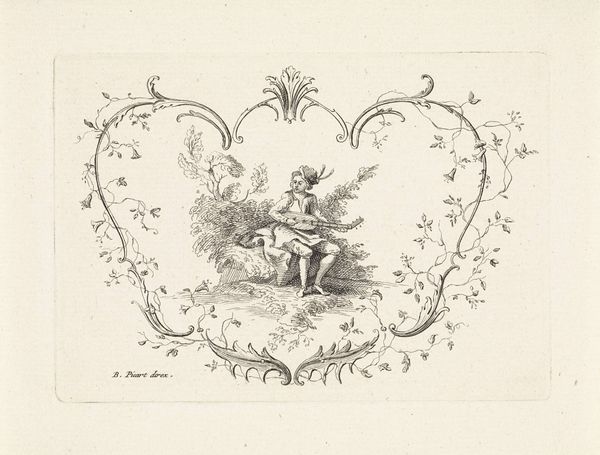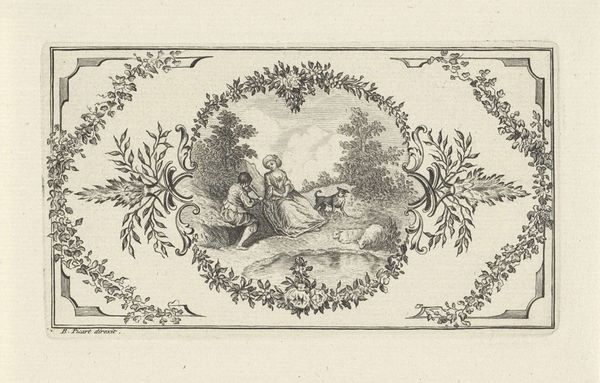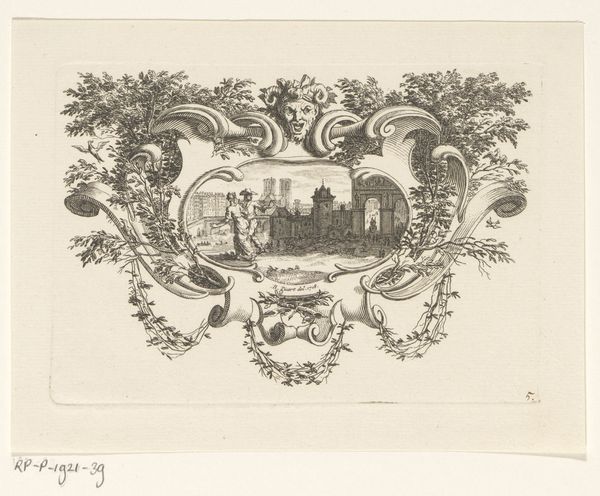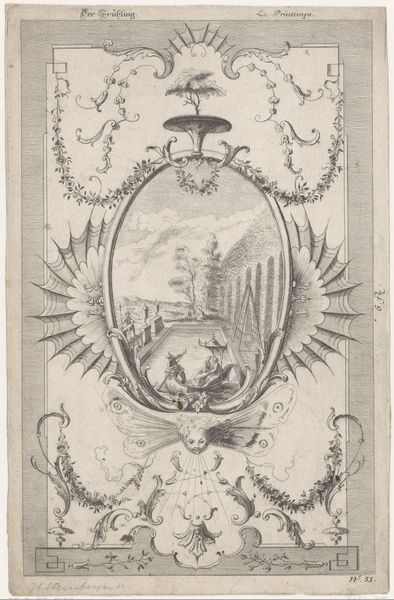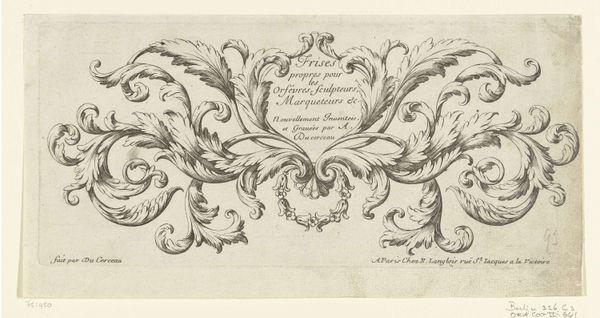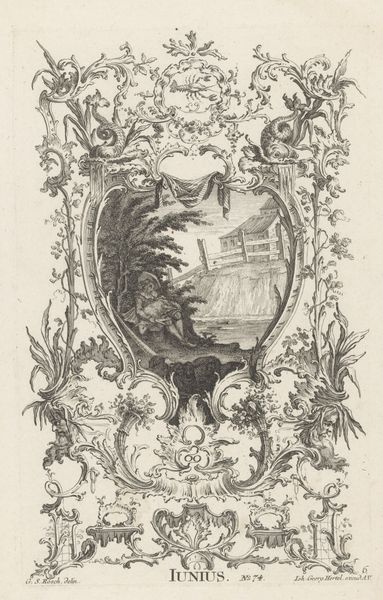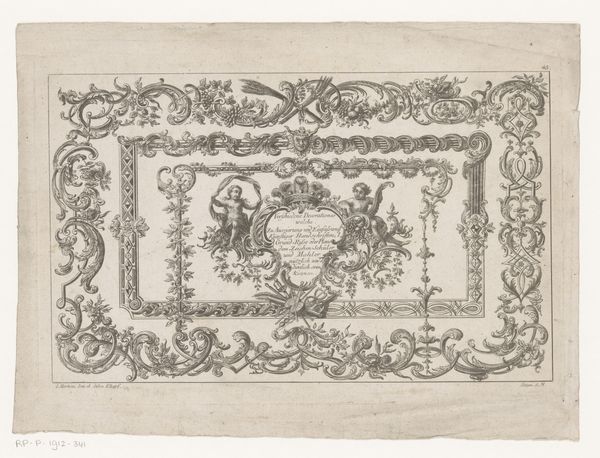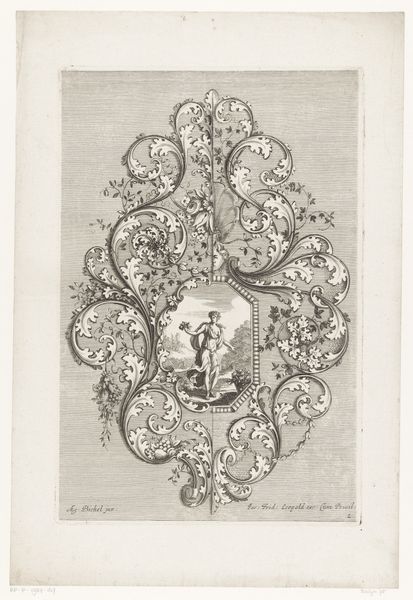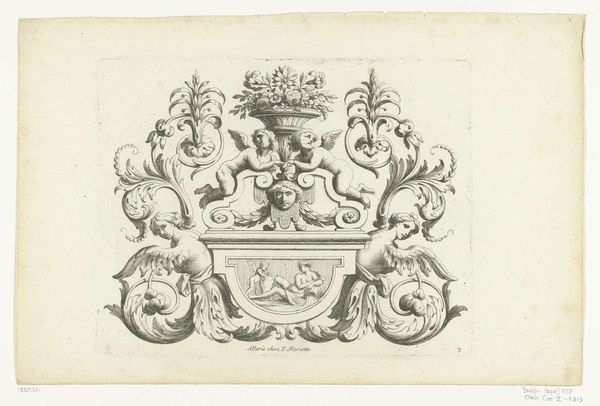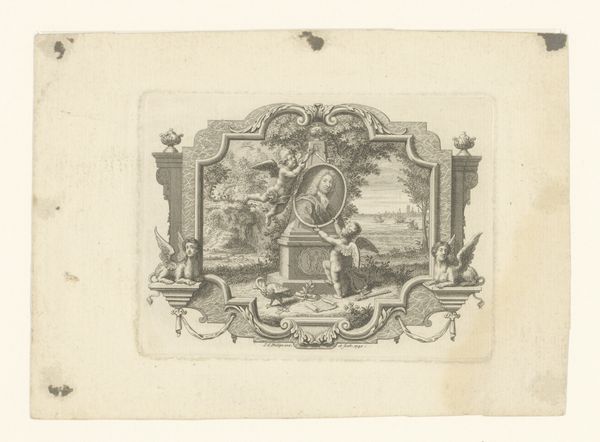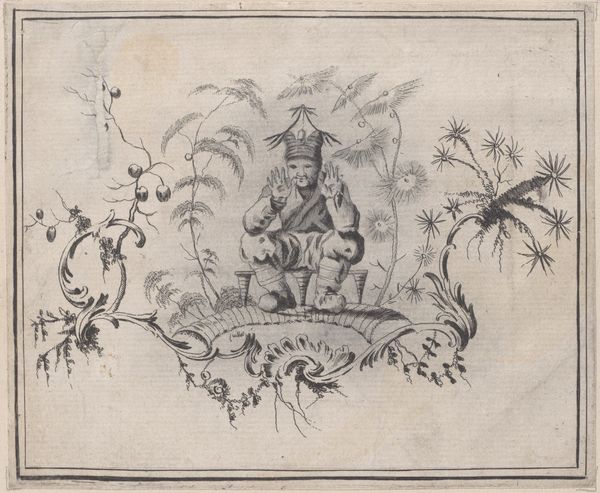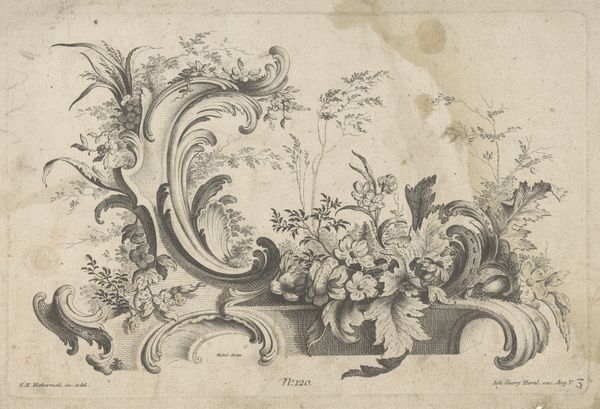
drawing, ink, engraving
#
drawing
#
garden
#
pen drawing
#
old engraving style
#
landscape
#
personal sketchbook
#
ink
#
ink drawing experimentation
#
genre-painting
#
decorative-art
#
engraving
#
rococo
Dimensions: height 84 mm, width 126 mm
Copyright: Rijks Museum: Open Domain
Editor: So, here we have "Vignet met putti in tuin" by Pierre-Edme Babel, made around 1750. It’s an ink and pen drawing at the Rijksmuseum. I'm struck by how playful it is; these little putti seem to be staging a whole scene within this elaborate frame. What strikes you when you look at this? Curator: It’s the Rococo period’s emphasis on ornament and the aristocratic fantasy of the pastoral. These cherubic figures enacting a garden scene within this elaborate vignette served a purpose, probably decorative, perhaps as a design element for a larger project. Editor: What kind of projects are you thinking of? Curator: The print could have served as an autonomous decorative piece in the luxurious houses. But it may have served as inspiration for other art, such as tapestries or frescos for a privileged household. What do you think it communicates about the function of art and leisure for the elite? Editor: It’s interesting to consider its relationship to luxury and social status. Seeing them "work" in the garden –it all seems a little absurd when it’s rendered in such an opulent way. It’s work as theatre, perhaps? Curator: Precisely! And how this idyllic, idealized representation of labor masks the actual social and economic conditions. The 'genre-painting' theme elevates mundane activity to an aesthetic form. What do you make of the seemingly simple style? Editor: On closer inspection, the fine lines and detailing create a real sense of depth and movement. You begin to wonder at the artist's mastery to render the scene in so few simple lines. It really puts the “decorative” in "decorative art." I never considered before the socio-political dynamics influencing art of this period. Curator: Thinking about the piece in relation to these concerns transforms my understanding of its visual form and period style!
Comments
No comments
Be the first to comment and join the conversation on the ultimate creative platform.
